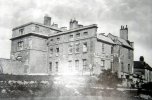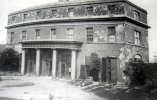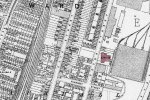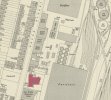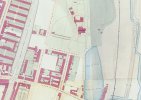-
Welcome to this forum . We are a worldwide group with a common interest in Birmingham and its history. While here, please follow a few simple rules. We ask that you respect other members, thank those who have helped you and please keep your contributions on-topic with the thread.
We do hope you enjoy your visit. BHF Admin Team
You are using an out of date browser. It may not display this or other websites correctly.
You should upgrade or use an alternative browser.
You should upgrade or use an alternative browser.
duddeston house
- Thread starter Astoness
- Start date
Here are three more, including one when it was a school. The following is copied from my notes for the Alan Godfrey Saltley 1913 map:
This was originally Duddeston House, built in 1758 as the house of Samuel Galton senior. The Galton family left the house in 1838 after the death of Samuel Galton junior, and it was a lunatic asylum till 1865. But from 1868 it was used as a school, being named St Anne's National School, and the building survived till 1971. The Galton family were Quaker gunmakers, a somewhat peculiar combination, but the son was also an avid scientific investigator and contributor to the affairs of the Lunar Society and gave assistance to Joseph Priestley during the Priestley Riots in 1791. One of the Galton factories involved in gunmaking was Duddeston Mill.
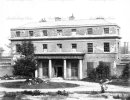
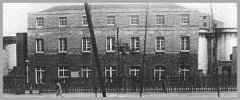
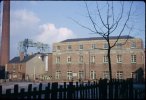
This was originally Duddeston House, built in 1758 as the house of Samuel Galton senior. The Galton family left the house in 1838 after the death of Samuel Galton junior, and it was a lunatic asylum till 1865. But from 1868 it was used as a school, being named St Anne's National School, and the building survived till 1971. The Galton family were Quaker gunmakers, a somewhat peculiar combination, but the son was also an avid scientific investigator and contributor to the affairs of the Lunar Society and gave assistance to Joseph Priestley during the Priestley Riots in 1791. One of the Galton factories involved in gunmaking was Duddeston Mill.



mw0njm.
A Brummie Dude
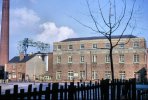
Duddeston House, Saltley gas works in the background 1954 photographed by Phyllis Nicklin . At this time it was St Anne's School
On the east side of Devon Street was the Galton family home. Known as Duddeston House, or later confusingly Duddeston Hall, it had been built in a neo-classical style in 1758. There were extensive grounds along the river with a lake covering 2 hectares which was stocked with exotic waterfowl. Samuel Galton Junior was a man of many interests. It was he who discovered that the seven colours of the spectrum are made up only of red, yellow and blue.
After the Galtons left in 1838 the house was used as a lunatic asylum until 1865. and with increasing urbanisation, from 1868 for the overflow of infants of St Matthew's School in Cato Street. As the population continued to increase, the building was altered the following year to accommodate a teacher's house and some 750 pupils, and was renamed St Anne's National School.
However, Her Majesty's Inspectors reported poor buildings and poor education iin 1894. The Board of Education were still demanding improvements in 1912. As part of the wide-scale redevelopment of the area the school was closed and the building demolished in 1971 with the children transferring to the new St Matthews School on Duddeston Manor Road.

